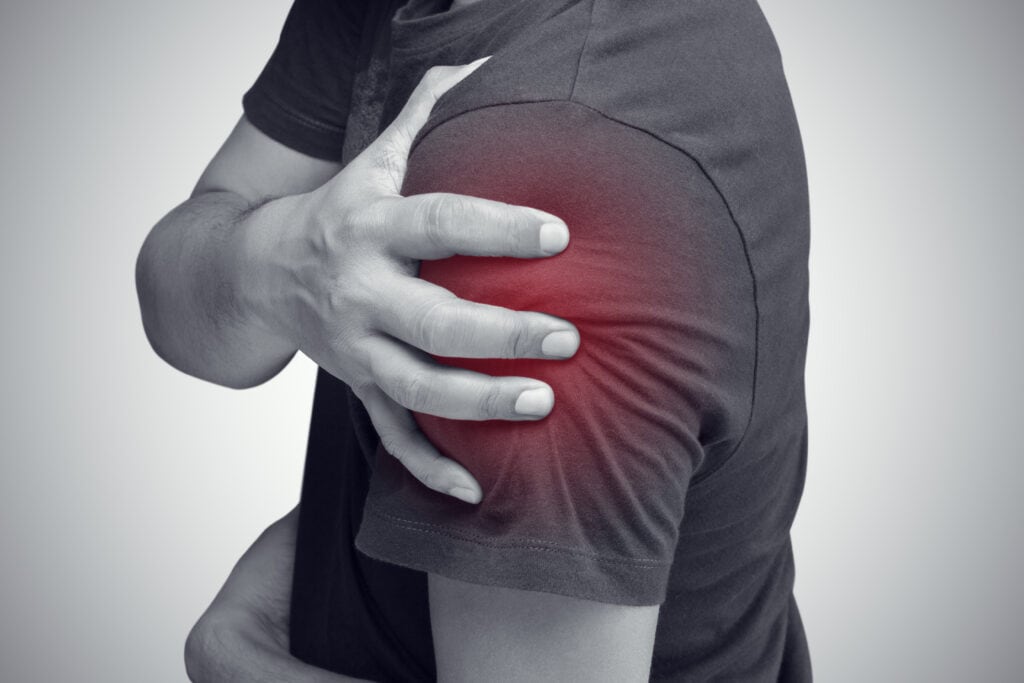The Fake PRP Files: New Shoulder Rotator Cuff Study

Credit: Shutterstock
You’ve read here several times that the concentration of PRP matters. Despite that, we continue to see studies that use bad “PRP” kits that don’t produce anything that meets the definition of PRP. A recent study was just published on rotator cuff tears that highlights that problem. Let’s dig in.
PRP and Concentration
PRP stands for platelet-rich plasma, which means that platelets from the blood are concentrated in plasma. I have blogged on this issue several times (blog 1, blog 2, blog 3). Our data on how PRP concentration impacts tendon cells (tenocytes) and mesenchymal stem cells is clear. For young patients, low concentrations of PRP (fewer platelets injected per unit volume) are fine. For middle-aged and older patients, there is a direct dose-response relationship between PRP concentration and growth in these cells (5). For example, 3X (three times the baseline platelet number in the blood) will produce X growth in these cells, while 9X (three times more platelet) will produce about 3x the growth and healing. Hence, PRP concentration matters as you age.
The Recent Study
The recent research was done in Thailand and looked at a small number of patients with a partial rotator cuff tear that were injected with either “PRP” or steroids (1). The “PRP” patients had better pain/functional results, which is consistent with other PRP studies on partial rotator cuff tear patients (4). However, this study also performed before and after MRIs and saw no difference in the tear size between the “PRP” and steroid group on that metric.
How Concentrated was this PRP?
The authors took 15 ml of blood and ended up with 5 ml using an Arthrex ACP system. That system doesn’t produce PRP, which must be at least 2X in concentration, which is why I have the term “PRP” above in quotes. Magalon et al. tested this device, and the “PRP” it produced was a paltry 1.3X, which means it has barely more platelets than whole blood (2,3).
How old were the patients in this study? Based on our published data, we know that this detail makes a big difference in results. They were in the late 50s to early 60s. Meaning that injecting a 1.3X concentration of platelets would have little ability to stimulate tenocyte growth or to get those cells to close a gap. Hence, based on the low platelet concentration, we would predict that the MRI results wouldn’t differ between the groups.
Why Are Studies that never Used PRP Still Getting Published as Representing PRP?
The answer is simple. The vast majority of physician reviewers for even highly regarded medical journals know enough about PRP to be dangerous. For example, they don’t know enough to understand that the Arthrex ACP system used in this paper doesn’t meet the minimal definition of PRP. For medical providers who use PRP, this is a very real problem as the literature is getting seeded with these fake PRP studies. For patients, this also means that your doctor is unlikely to know much about PRP outside of what the sales rep sold him.
The upshot? PRP concentration matters, which is why at Regenexx, we have always used highly concentrated PRP in middle-aged and older patients. Regrettably, many providers have never gotten that memo.
________________________________________________
References:
(1) Tanpowpong T, Thepsoparn M, Numkarunarunrote N, Itthipanichpong T, Limskul D, Thanphraisan P. Effects of Platelet-Rich Plasma in Tear Size Reduction in Partial-Thickness Tear of the Supraspinatus Tendon Compared to Corticosteroids Injection. Sports Med Open. 2023 Feb 8;9(1):11. doi: 10.1186/s40798-023-00556-w. PMID: 36752928; PMCID: PMC9908802.
(2) Magalon J, Bausset O, Serratrice N, Giraudo L, Aboudou H, Veran J, Magalon G, Dignat-Georges F, Sabatier F. Characterization and comparison of 5 platelet-rich plasma preparations in a single-donor model. Arthroscopy. 2014 May;30(5):629-38. doi: 10.1016/j.arthro.2014.02.020. PMID: 24725317.
(3) Marx RE. Platelet-rich plasma: evidence to support its use. J Oral Maxillofac Surg. 2004 Apr;62(4):489-96. doi: 10.1016/j.joms.2003.12.003. PMID: 15085519.
(4) Zhu P, Wang Z, Li H, Cai Y. Platelet-Rich Plasma Injection in Non-Operative Treatment of Partial-Thickness Rotator Cuff Tears: A Systematic Review and Meta-Analysis. J Rehabil Med. 2022 Sep 16;54:jrm00312. doi: 10.2340/jrm.v54.1434. PMID: 35892292; PMCID: PMC9495266.
(5) Berger DR, Centeno CJ, Steinmetz NJ. Platelet lysates from aged donors promote human tenocyte proliferation and migration in a concentration-dependent manner. Bone Joint Res. 2019 Feb 2;8(1):32-40. doi: 10.1302/2046-3758.81.BJR-2018-0164.R1. PMID: 30800297; PMCID: PMC6359887.

NOTE: This blog post provides general information to help the reader better understand regenerative medicine, musculoskeletal health, and related subjects. All content provided in this blog, website, or any linked materials, including text, graphics, images, patient profiles, outcomes, and information, are not intended and should not be considered or used as a substitute for medical advice, diagnosis, or treatment. Please always consult with a professional and certified healthcare provider to discuss if a treatment is right for you.
